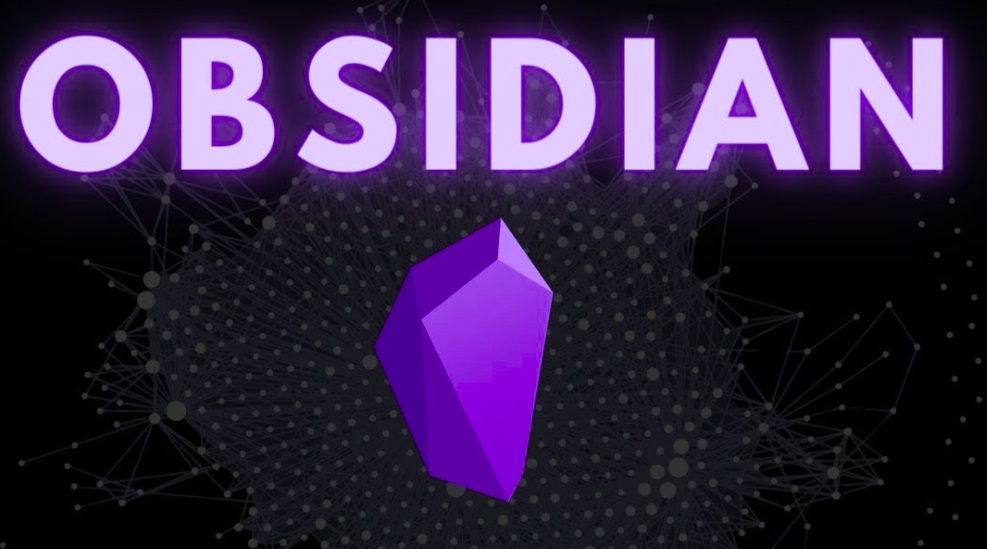Obsidian – A Novel Notetaking Software and Why I Don't Like It
As a student, taking notes during lectures is perhaps the most common task I do every single day, often for several hours on end- when I'm not absorbed by just plain fun distractions like PlayCroco Casino. The process of absorbing information from my lecturer to my brain, to be transcribed into my own notes for review later, is fundamental for academic success.
There are a gazillion pieces of advice for how to improve and streamline this entire process, from methodologies like "Active Recall" to highlighting to using digital tablets to not even taking notes at all during the lecture.
Personally, I am fairly old school when it comes to note taking. I have a stack of five subject graph paper notebooks- each for one or two classes. I write notes with a pen and highlight titles of sections with an orange highlighter, formulas and important info with a yellow highlighter, and important notes and miscellaneous stuff with blue, green, and pink highlighters. The process has several advantages for me:
First, it's applicable to almost all of my classes. None of the professors expect anything more, and the flexibility of a pen allows me to draw, scribble, and doodle just about anything the teacher can put up on the board.
The second advantage is that physically writing stuff gets transcribed in the brain and makes the information easier to recall. So I transcribe everything and understand later when it comes time to highlight what's important.
However, for a single class, I decided that I was going to try something different. I decided that I would use my laptop and try out a recommended software called Obsidian and see how it worked. Since the class in question isn't very challenging, I figured it would be a good testing ground, and hey, I might even discover something incredible along the way.

What is Obsidian?
In short, the tagline of the software is, 'Obsidian is a powerful knowledge base on top of a local folder of plain text Markdown files.' What that translates into is a series of files, stored locally on your machine (instead of being saved to a distant cloud), made up of fairly basic / standard formatting. You see, hidden beneath Microsoft Word's sexy exterior is just HTML and markdown- and markdown is just a way of typing out HTML easier.
So why use something like Obsidian over, say, Word? The first is that Obsidian allows for multiple notes under a single, general database of notes.
For instance, I have a database called 'Industrial Processes' (the name of the class I'm taking). Within that database, I have notes on Steel, Welding, Cold Rolling, Thermal Treatment, and many others.
And here's where Obsidian gets interesting: Obsidian describes itself as a "non-linear" notetaking method. Its claim is that the human brain is a complex, non-linear thing that always jumps from one idea to the next without necessarily doing so in a clean, organized manner.
Obsidian's intent is to fuel this kind of thinking through the ability to quickly and easily link one note to another through tags. These tags are as easy as just typing [[name of note]], and voila! Instant link to notes. You can even hover over these links for a small preview of the note in question, which I think is cool. There's also a nifty graph mode, which allows you to view all your notes and see how they all interconnect with one another.
Another cool feature is that because everything is implemented through simple HTML and markup, inserting images is far less finicky than with Word. I think everyone has had the experience of moving an image slightly, resulting in your entire document flailing wildly and getting entirely screwed up until you mash ctrl + z. Obsidian only lets images be inserted through text based tags, meaning that the images stay precisely where you want them at all times.
The Disadvantages
That being said, while Obsidian certainly has its advantages, I probably won't be using it for notetaking in any other classes in the future. And the reason has little to do with Obsidian itself.
I'm a fairly visual person, and my classes often require lots of diagrams. Drawing matrices, vectors, and graphs by hand is significantly easier than attempting it with a mouse or trackpad. So while Obsidian has a set of pretty powerful
- Microsoft 3D software will be used to explore Mars
- Software deletes people who don't want to get out of the picture
- Software makes the phone 'reactive'
- Detecting ghost PC management software
- Surf the web more safely with anti-Keylog software
- 28% of software is not patched by security
- 6 best DNS changing software for Windows
- Robot will write a novel
- 5 best free antivirus software 2016
- Software guesses the killer
- Software to manage and look up plant diversity in Vietnam
- Typical free software in 2005
 America develops cruise missiles in formation
America develops cruise missiles in formation Develop smart contact lenses that the US military has been looking for for a long time
Develop smart contact lenses that the US military has been looking for for a long time Has found a solution to 'freeze' lithium ion batteries with liquid nitrogen, avoiding batteries to explode if there is a collision
Has found a solution to 'freeze' lithium ion batteries with liquid nitrogen, avoiding batteries to explode if there is a collision 6 best DNS changing software for Windows
6 best DNS changing software for Windows